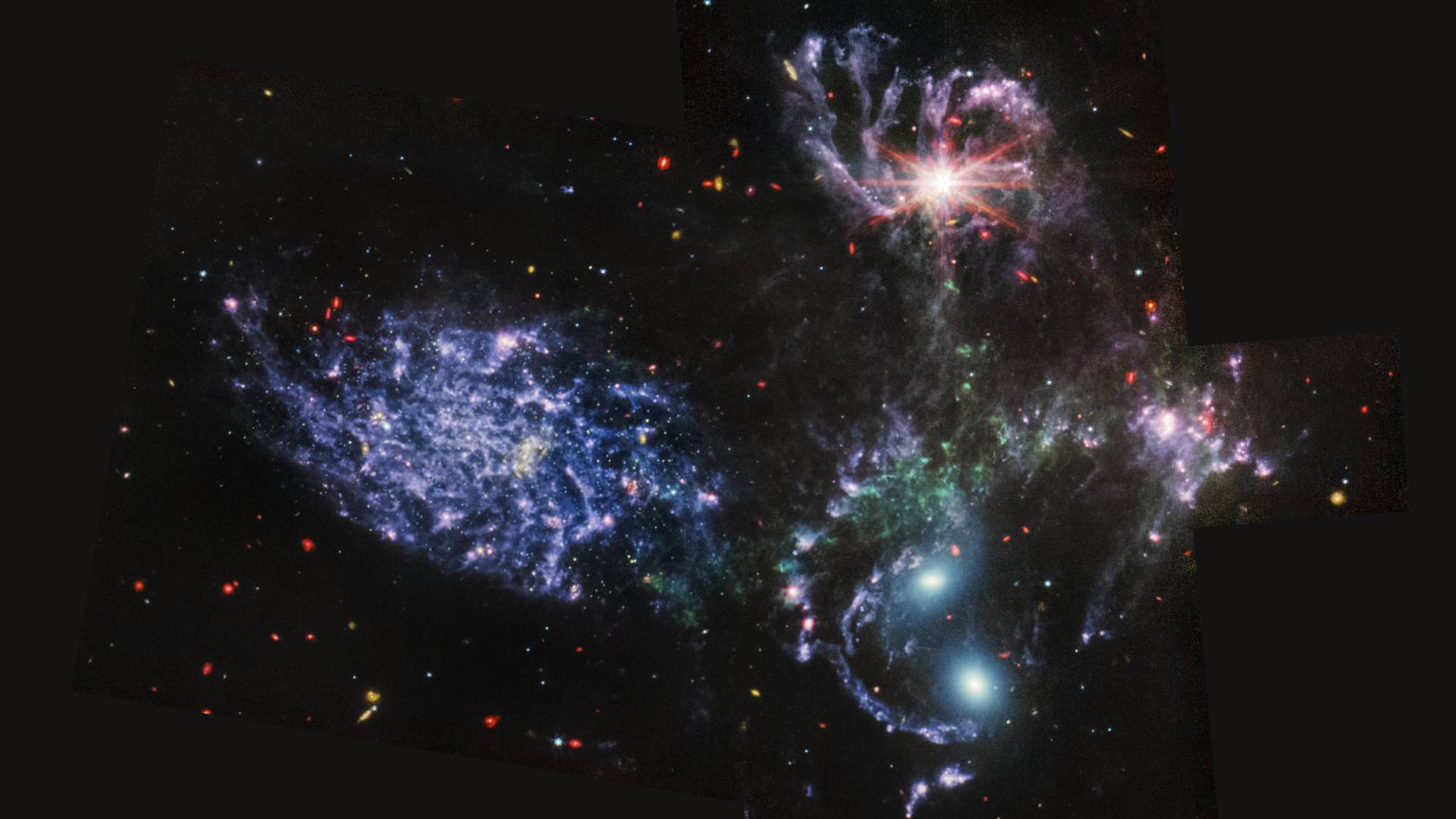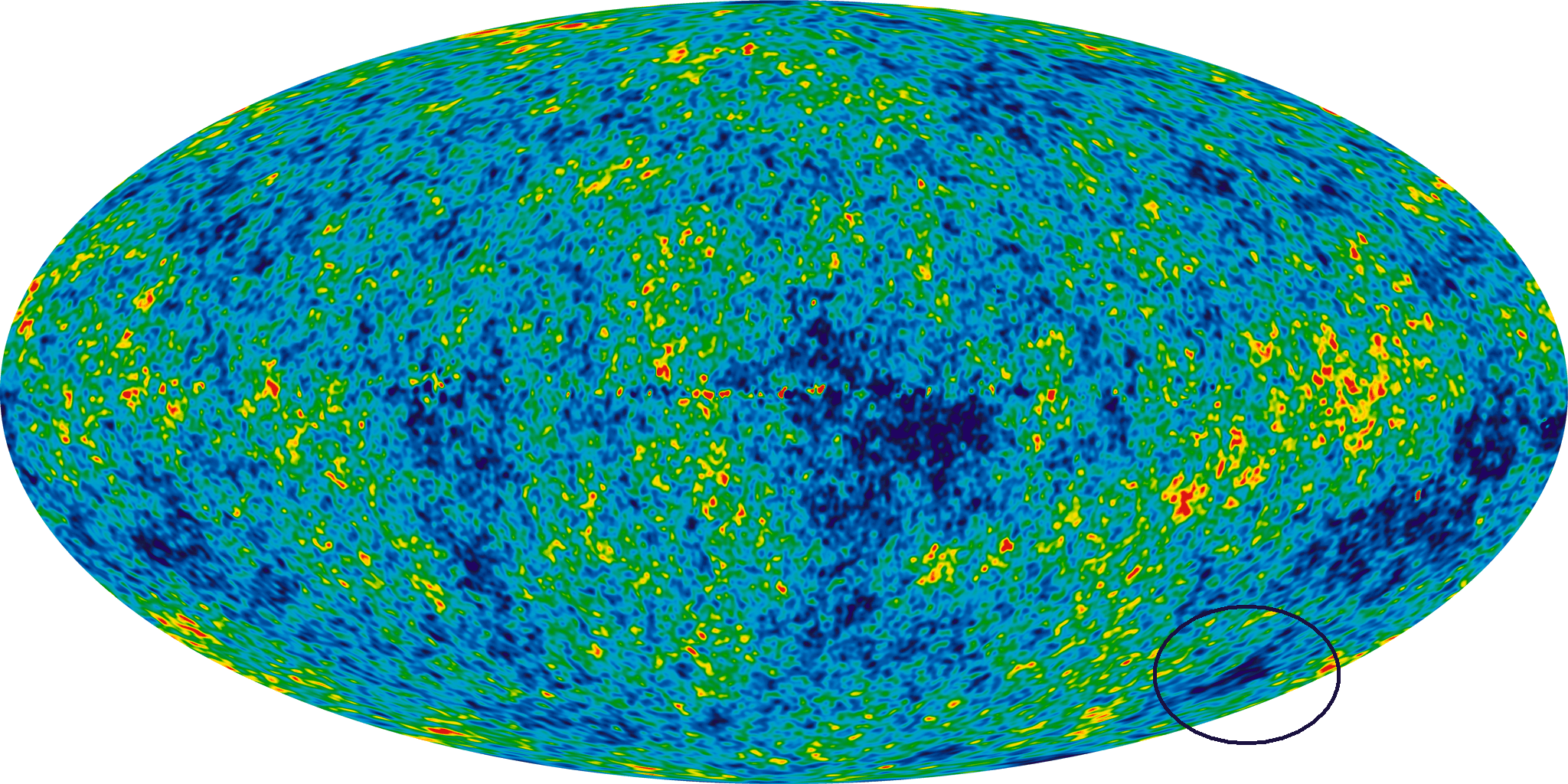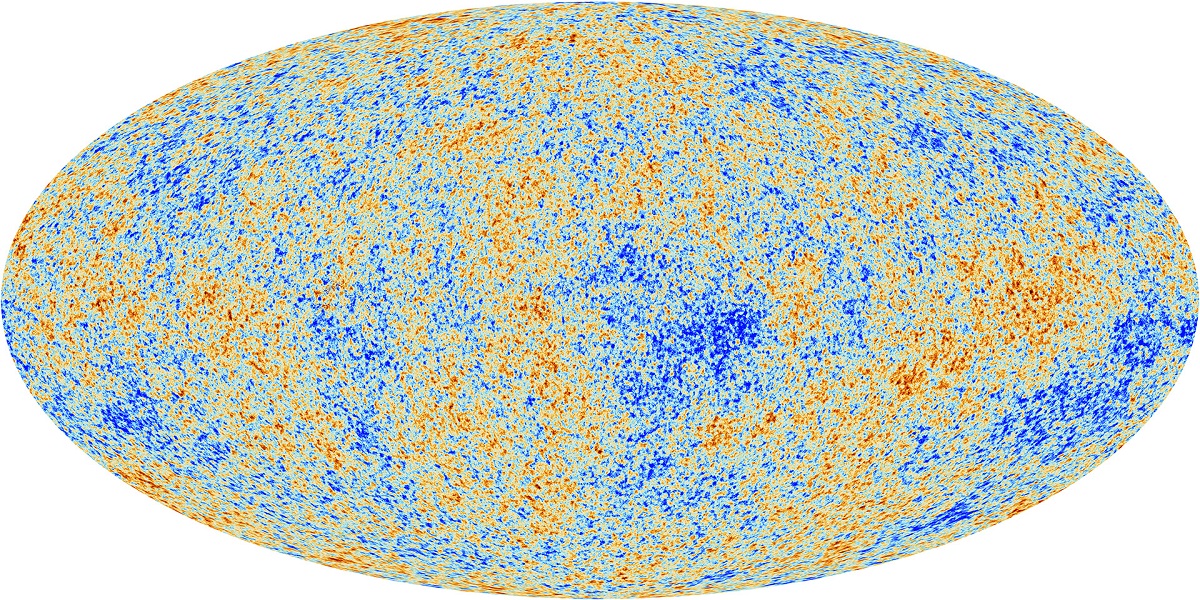In the earliest moments of the Universe, the first photons were trapped in a sea of ionized gas. They scattered randomly with the hot nuclei and electrons of the cosmic fireball, like tiny boats in a stormy sea. Then, about 370,000 years after the big bang, the Universe cooled enough for the photons to be free. After one last scattering, they could finally ply interstellar space. Some of them traveled across 14 billion years of space and time to reach Earth, where we see them as part of the cosmic microwave background. The remnant first light of creation.
Continue reading “A New Look a the Most Ancient Light in the Universe”The First Light in the Universe Helps Build a Dark Matter Map

In the 1960s, astronomers began noticing a pervasive microwave background visible in all directions. Thereafter known as the Cosmic Microwave Background (CMB), the existence of this relic radiation confirmed the Big Bang theory, which posits that all matter was condensed onto a single point of infinite density and extreme heat that began expanding ca. 13.8 years ago. By measuring the CMB for redshift and comparing these to local distance measurements (using variable stars and supernovae), astronomers have sought to measure the rate at which the Universe is expanding.
Around the same time, scientists observed that the rotational curves of galaxies were much higher than their visible mass suggested. This meant that either Einstein’s Theory of General Relativity was wrong or the Universe was filled with a mysterious, invisible mass. In a new series of papers, members of the Atacama Cosmology Telescope (ACT) collaboration have used background light from the CMB to create a new map of Dark Matter distribution that covers a quarter of the sky and extends deep into the cosmos. This map confirms General Relativity and its predictions for how mass alters the curvature of spacetime.
Continue reading “The First Light in the Universe Helps Build a Dark Matter Map”Astronomers Make a New Map of all the Matter (and Dark Matter) in the Universe

There’s a lot of matter in the Universe, but not all of it is visible to us. Matter is, essentially, anything that has mass and takes up space. That includes us, the planets, stars, nebulae, and galaxies. It also includes dark matter. It’s all spread out through space.
Continue reading “Astronomers Make a New Map of all the Matter (and Dark Matter) in the Universe”Perhaps a Supervoid Doesn’t Explain the Mysterious CMB Cold Spot

For years cosmologists had thought that a strange feature appearing in the microwave sky, known as the CMB cold spot, was due to the light passing through a giant supervoid. But new research casts that conclusion into doubt.
Continue reading “Perhaps a Supervoid Doesn’t Explain the Mysterious CMB Cold Spot”Finally, an Explanation for the Cold Spot in the Cosmic Microwave Background

According to our current Cosmological models, the Universe began with a Big Bang roughly 13.8 billion years ago. During the earliest periods, the Universe was permeated by an opaque cloud of hot plasma, preventing atoms from forming. About 380,000 years later, the Universe began to cool and much of the energy generated by the Big Bang converted into light. This afterglow is now visible to astronomers as the Cosmic Microwave Background (CMB), first observed during the 1960s.
One peculiar characteristic about the CMB that attracted a lot of attention was the tiny fluctuations in temperature, which could provide information about the early Universe. In particular, there is a rather large spot in the CMB that is cooler than the surrounding afterglow, known as the CMB Cold Spot. After decades of studying the CMB’s temperature fluctuations, a team of scientists recently confirmed the existence of the largest cold spots in the CMB afterglow – the Eridanus Supervoid – might be the explanation for the CMB Cold Spot that astronomers have been looking for!
Continue reading “Finally, an Explanation for the Cold Spot in the Cosmic Microwave Background”New Observations Agree That the Universe is 13.77 Billion Years old

The oldest light in the universe is that of the cosmic microwave background (CMB). This light was formed when the dense matter at the beginning of the universe finally cooled enough to become transparent. It has traveled for billions of years to reach us, stretched from a bright orange glow to cool, invisible microwaves. Naturally, it is an excellent source for understanding the history and expansion of the cosmos.
Continue reading “New Observations Agree That the Universe is 13.77 Billion Years old”An Astronomer Checked to see if There’s a Secret Message in the Cosmic Microwave Background Radiation

In the New Testament, the book of John opens with In the beginning was the Word. Whether a poetic musing of philosophy or a declaration of faith, it encapsulates an idea that has been around a long time. If the cosmos was made, either by advanced aliens or a divine creator, might this architect have buried a message within the universe? Some absolute proof of intentional design.
Continue reading “An Astronomer Checked to see if There’s a Secret Message in the Cosmic Microwave Background Radiation”The Average Temperature of the Universe has Been Getting Hotter and Hotter

For almost a century, astronomers have understood that the Universe is in a state of expansion. Since the 1990s, they have come to understand that as of four billion years ago, the rate of expansion has been speeding up. As this progresses, and the galaxy clusters and filaments of the Universe move farther apart, scientists theorize that the mean temperature of the Universe will gradually decline.
But according to new research led by the Center for Cosmology and AstroParticle Physics (CCAPP) at Ohio State University, it appears that the Universe is actually getting hotter as time goes on. After probing the thermal history of the Universe over the last 10 billion years, the team concluded that the mean temperature of cosmic gas has increased more than 10 times and reached about 2.2 million K (~2.2 °C; 4 million °F) today.
Continue reading “The Average Temperature of the Universe has Been Getting Hotter and Hotter”New observations from the Planck mission don’t resolve anomalies like the CMB “cold spot”

Back in 2013, the European Space Agency released its first analysis of the data gathered by the Planck observatory. Between 2009 and 2013, this spacecraft observed the remnants of the radiation that filled the Universe immediately after the Big Bang – the Cosmic Microwave Background (CMB) – with the highest sensitivity of any mission to date and in multiple wavelengths.
In addition to largely confirming current theories on how the Universe evolved, Planck’s first map also revealed a number of temperature anomalies – like the CMB “Cold Spot” – that are difficult to explain. Unfortunately, with the latest analysis of the mission data, the Planck Collaboration team has found no new evidence for these anomalies, which means that astrophysicists are still short of an explanation.
Continue reading “New observations from the Planck mission don’t resolve anomalies like the CMB “cold spot””What is the Cosmic Microwave Background?

For thousands of years, human being have been contemplating the Universe and seeking to determine its true extent. And whereas ancient philosophers believed that the world consisted of a disk, a ziggurat or a cube surrounded by celestial oceans or some kind of ether, the development of modern astronomy opened their eyes to new frontiers. By the 20th century, scientists began to understand just how vast (and maybe even unending) the Universe really is.
And in the course of looking farther out into space, and deeper back in time, cosmologists have discovered some truly amazing things. For example, during the 1960s, astronomers became aware of microwave background radiation that was detectable in all directions. Known as the Cosmic Microwave Background (CMB), the existence of this radiation has helped to inform our understanding of how the Universe began. Continue reading “What is the Cosmic Microwave Background?”

